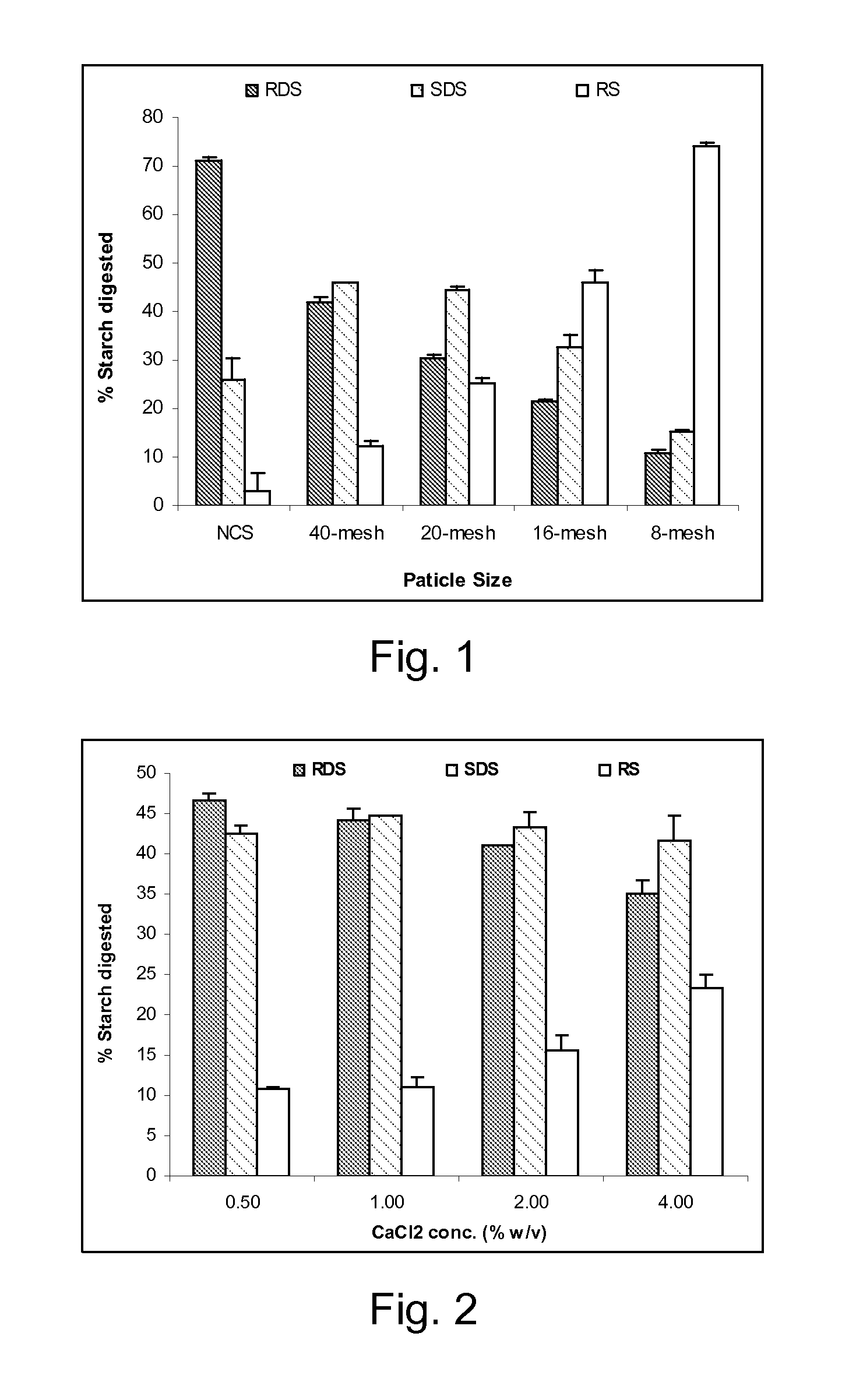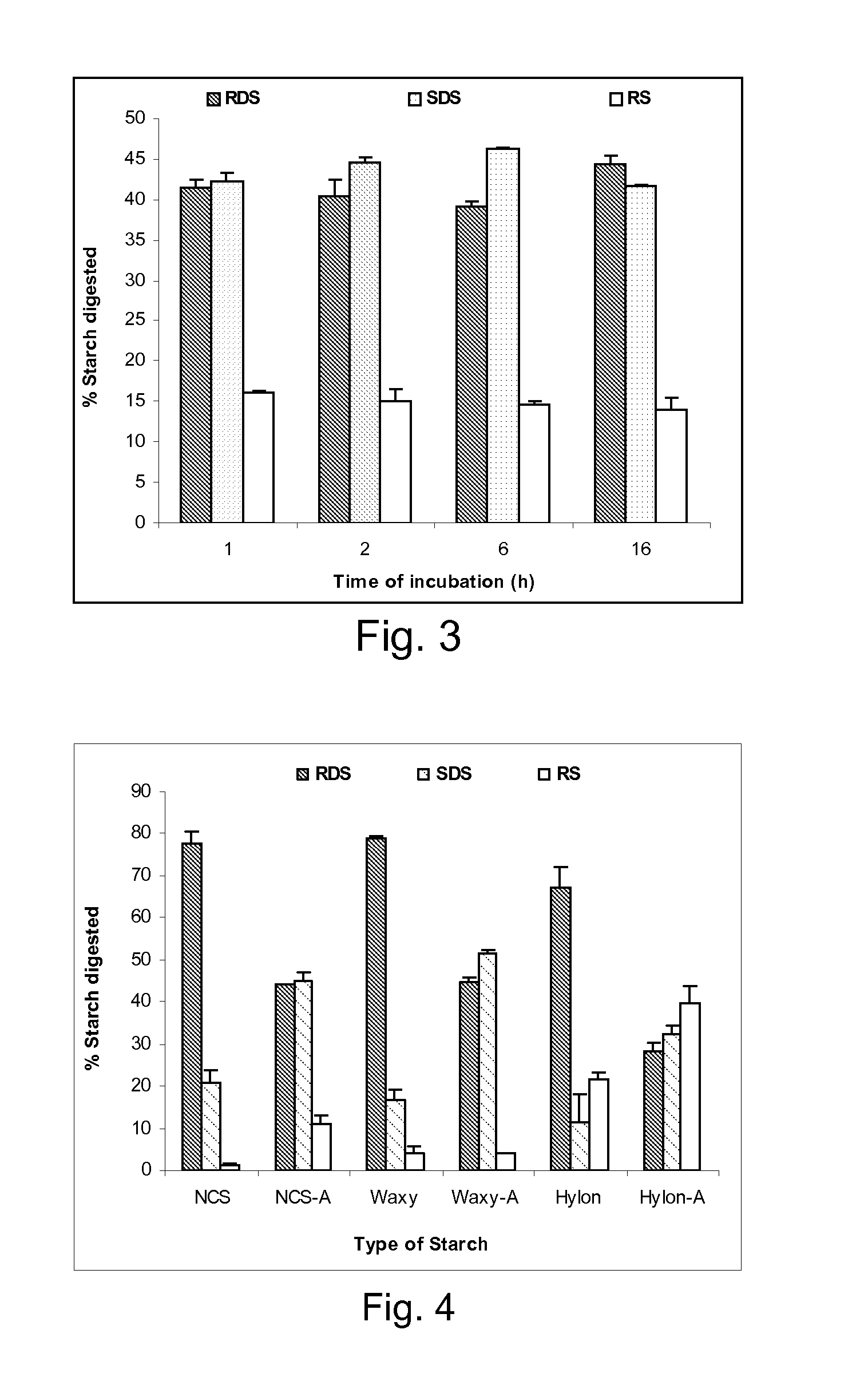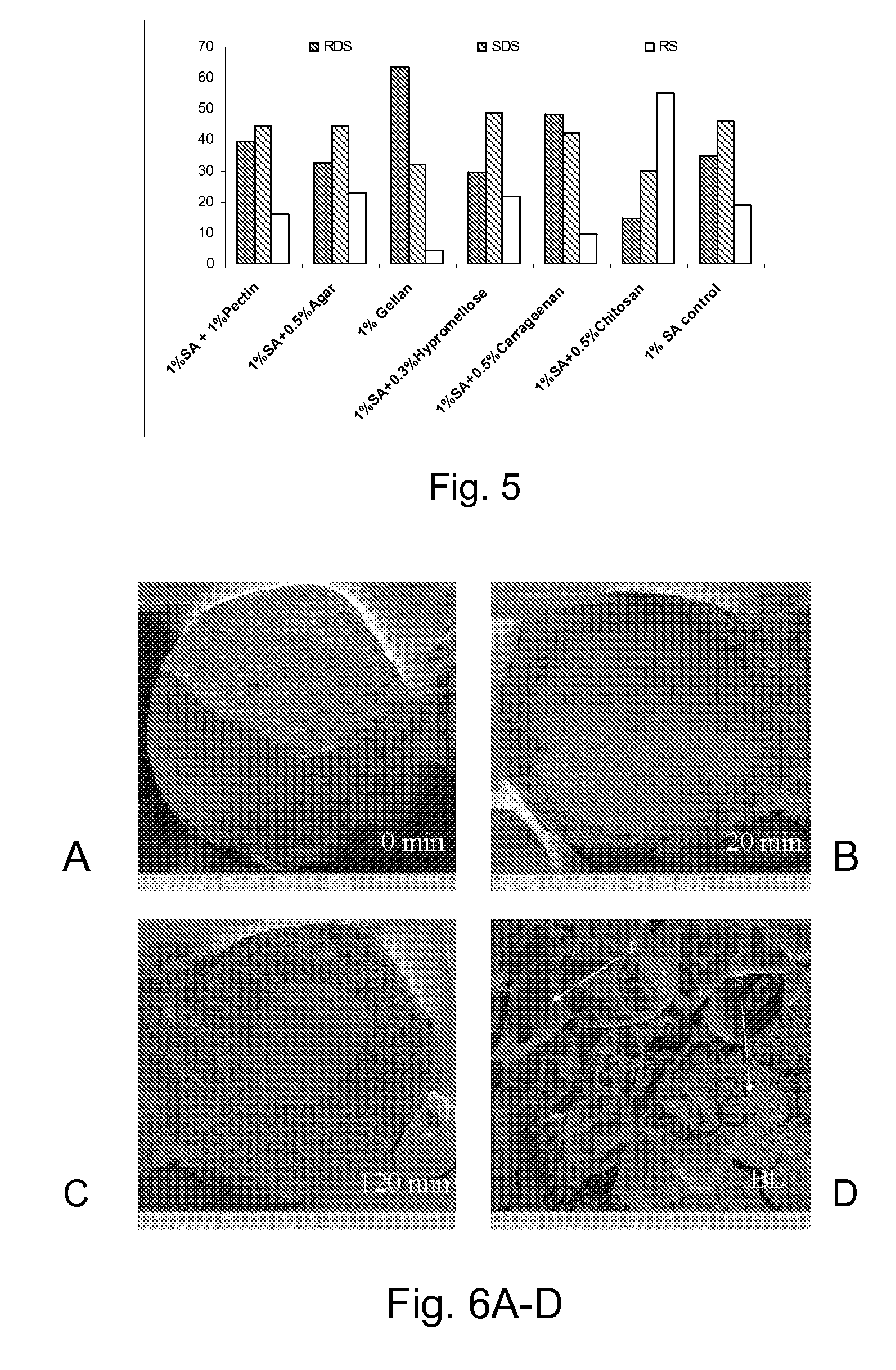Slowly digesting starch and fermentable fiber
a technology of which is applied in the field of slowly digesting starch and fermentable fiber, can solve the problems of rds and high gi foods
- Summary
- Abstract
- Description
- Claims
- Application Information
AI Technical Summary
Benefits of technology
Problems solved by technology
Method used
Image
Examples
example 1
Entrapment of Starch in Alginate Microparticles / Microspheres
[0096] Effect of alginate concentration on efficiency of starch entrapment and digestion properties.
[0097] Sodium alginate (low viscosity, Sigma) was used to form microparticles. To 50 g water, a weighed amount of sodium alginate to obtain a 0-3% w / w solution was added, and then the mixture was stirred continuously to obtain a clear solution. Five grams of normal cornstarch (NCS) was added and mixed to form a homogenous suspension. Under continuous stirring, this mixture was dropped into a beaker containing 2% w / v calcium chloride solution (CaCI2) at room temperature (25° C.) through a hypodermic needle using a peristaltic pump. The alginate spheres prepared were allowed to incubate for 2-3 hr in the 2% w / v CaCI2 solution and then harvested by filtration. The collected beads were washed 3 times with distilled water and then dried for 12 hr in a hot air oven at 45° C.
[0098] A known weight of entrapped starch (˜-200 mg eq...
example 2
Effect of Sphere Size on Starch Digestibility.
[0101] Samples were prepared as in Example 1 using 2% alginate solution and NCS. Starch microspheres of different sizes were prepared by atomizing the alginate-starch homogenous suspension into the 2% w / v calcium chloride solution. The size of the cooked starch spheres influenced starch digestion rate (FIG. 1). A decrease in sphere size (8- to 40-mesh) resulted in an increase in both RDS (15% to 59%) and SDS (15% to 46%).
example 3
Effect of Calcium Chloride Solution on Starch Digestibility
[0102] Samples were prepared as in Example 1 using 1% alginate solution and NCS and dropping the alginate-starch homogenous suspension into a calcium chloride solution at various concentrations (0.5-4.0% w / v). As illustrated in FIG. 2, increasing CaCI2concentration (0.5% to 4%) resulted in a small decrease in RDS with a corresponding increase in RS. SDS values, however, did not change significantly.
PUM
| Property | Measurement | Unit |
|---|---|---|
| Fraction | aaaaa | aaaaa |
| Fraction | aaaaa | aaaaa |
| Fraction | aaaaa | aaaaa |
Abstract
Description
Claims
Application Information
 Login to View More
Login to View More - R&D
- Intellectual Property
- Life Sciences
- Materials
- Tech Scout
- Unparalleled Data Quality
- Higher Quality Content
- 60% Fewer Hallucinations
Browse by: Latest US Patents, China's latest patents, Technical Efficacy Thesaurus, Application Domain, Technology Topic, Popular Technical Reports.
© 2025 PatSnap. All rights reserved.Legal|Privacy policy|Modern Slavery Act Transparency Statement|Sitemap|About US| Contact US: help@patsnap.com



